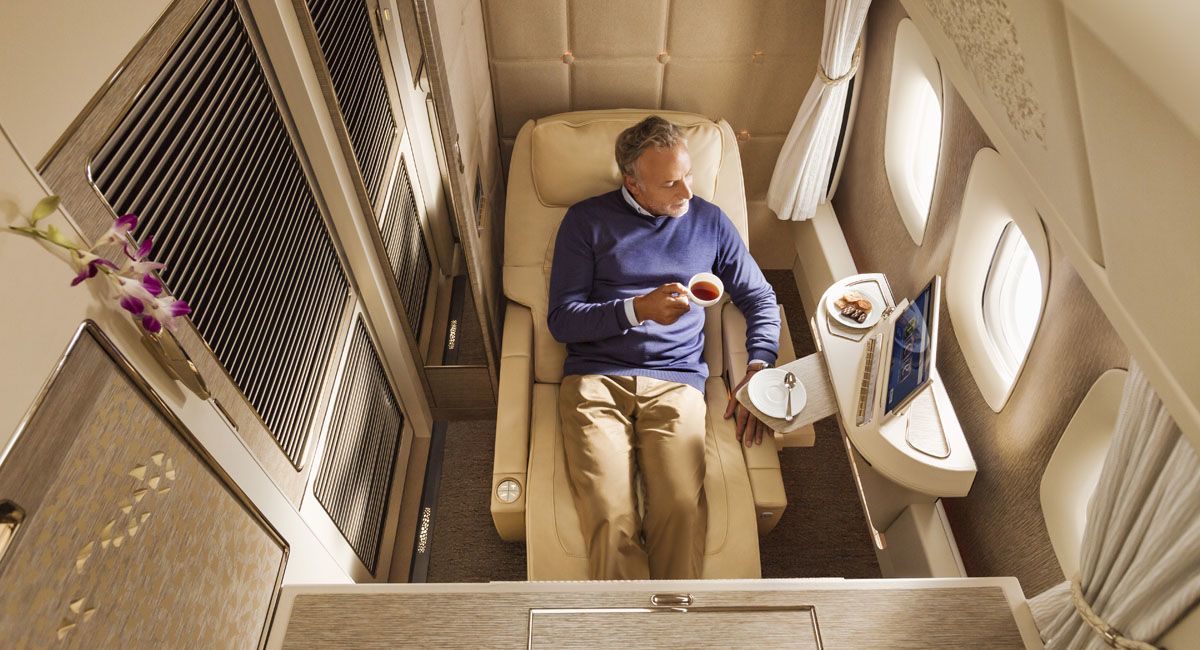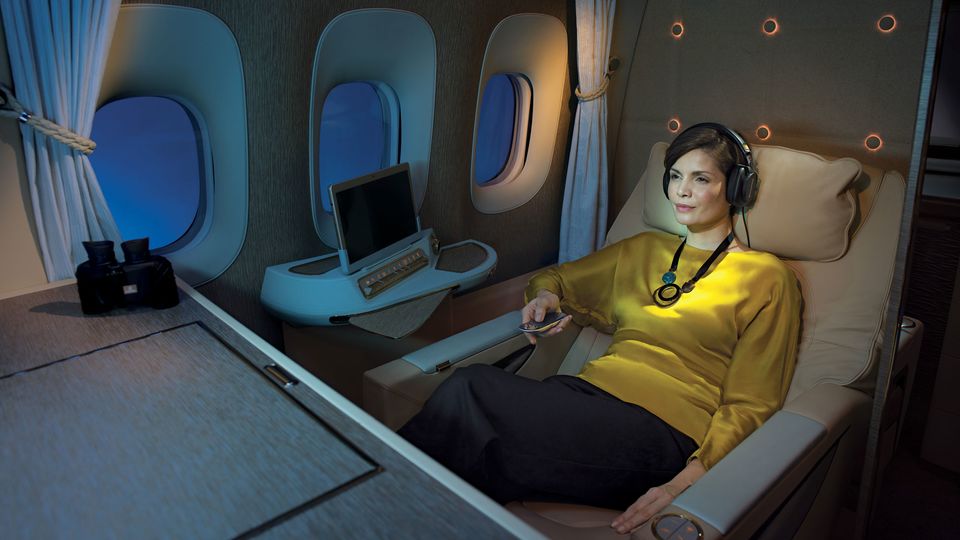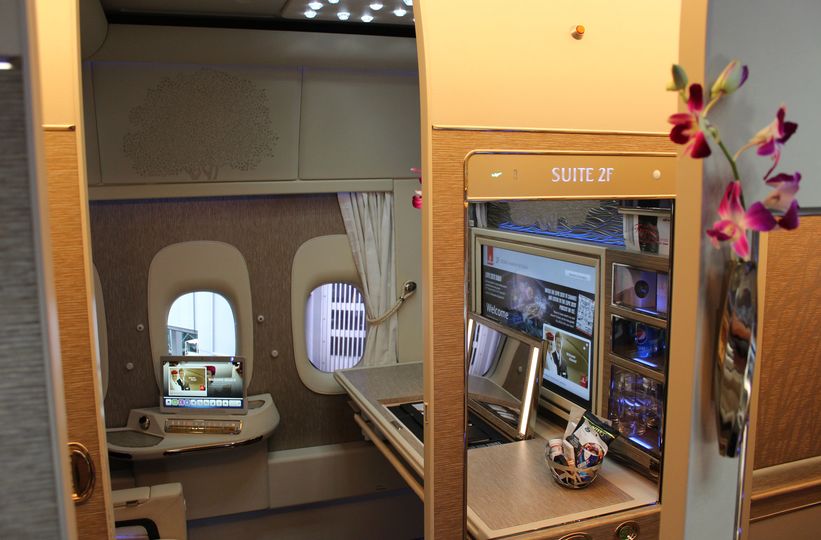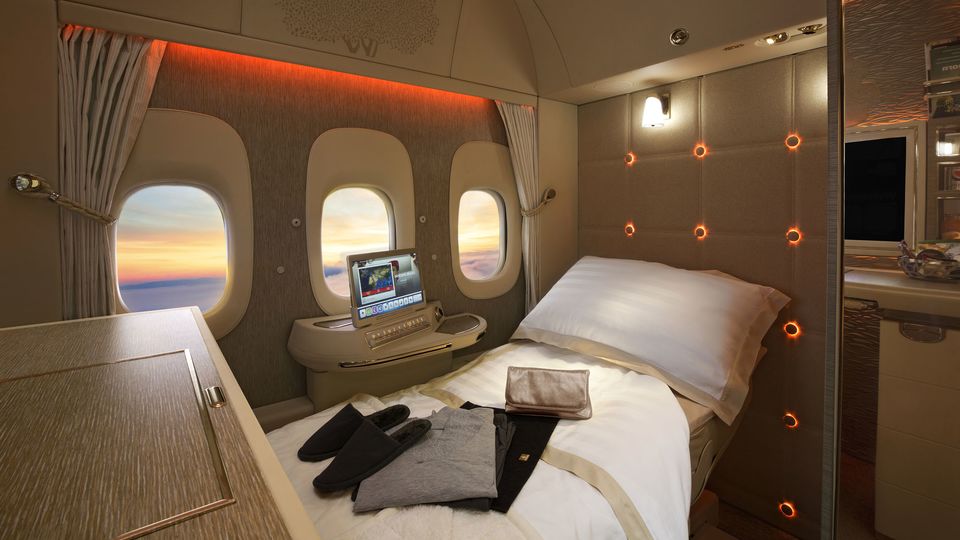Inside the design of Emirates' latest first class private suites
Emirates President Sir Tim Clark explains the design ethos behind the airline's first class suites, where privacy is top priority.

Back in 2017, Emirates drew wide acclaim with the launch of its new “game changer” first class suites, being the first time in commercial aviation that a first class cabin featured doors and walls stretching from the floor right up to the ceiling of each suite for complete passenger privacy.
However, in designing these suites, Emirates focused primarily on solo travellers rather than on pairs or jet-setting couples, and unlike some of the airline’s rivals, Emirates chose not to provide a separate bed and lounge chair in its own suites.
In an exclusive interview with Executive Traveller, Emirates President Sir Tim Clark explains the airline’s design ethos behind these suites, and why Emirates curated the experience with solo executive travellers in mind.
Emirates first class is all about privacy, not socialising
“We tend to find that most of our first class business is business driven,” Clark shares. “People want to get on, shut the door, relax, and unwind: people value the privacy.”
“People do (sometimes) travel with companions or colleagues from work – perhaps on the same trip – but believe it, they would rather just be on their own!”
Clark is a regular first class flyer, not only on Emirates but also on its partners and competitors, and personally observes that even when communal and social spaces are provided in first class by his rivals, they’re not widely used.
“To be quite honest, every time I travel first class on other airlines, unless there is a (couple) travelling together, or a small family, (using the social amenities) doesn't happen very often,”
For Emirates’ first class passengers that do want to chat, however, “they can do that in the suite,” Clark highlights.
“There are plenty of places to lean up against and talk, or sit around, without having to put ottomans and special seating areas in the suite for a guest to come and eat with you.”
On the Boeing 777s that feature Emirates’ fully-enclosed suites, it’s also possible for passengers to chat when seated across from each other at certain suites, as the doors and windows are aligned across the aisle.
When planning to chat, plant yourselves in 1A+1E, or 2F+2K – and of course, use the seating controls to slide each seat forwards, so that you can easily see each other.
ET review: Emirates’ Boeing 777 first class private suites
No need for a separate chair and bed in first class, says Clark
In designing these suites, Emirates chose not to follow the path of competitors such as Etihad and Lufthansa in providing a separate chair and bed for the airline’s flagship first class product – a move that Singapore Airlines would also adopt the following year with the debut of its revamped Airbus A380 Suites Class cabins.
“Having both of those monuments, the bed and the seat, occupies a lot of space – and frankly, we didn't see the need for it,” Clark explains. “Had we put a (separate) bed in, we would probably have only got two suites” on the Boeing 777s, versus the six prized suites that these planes now accommodate.
Instead, the chair in the suite converts into a fully-flat bed, and when making that transition into ‘bed mode’, the chair moves itself away from the aisle and closer to the window, creating a standing area between the bed and its aisle-side doors.
“You've actually got quite a lot of floor space when the bed is in bed mode: you can stand up and get changed” – one advantage of having that floor-to-ceiling privacy door.
“The seat itself was also designed by us with a corporate jet (influence), to make it wide enough to seem like a full-sized bed when you were lying on it,” Clark declares.
The other key focus, of course, remains that all-important privacy.
“A lot of our passengers in first class value this more than anything ... and frankly, we've had absolutely no complaints with regard to what we do,” says Clark.
Also read: Emirates eschews first class for new Boeing 787-9 fleet



24 Aug 2011
Total posts 1196
Surely STC should simply say that what you can do on an A380 is very different from a 777. In the A380, no one passes through the cabin except maybe J class on boarding depending on the configuration. With a 777, there is extensive through traffic as crew have to move to get to cockpit, galleys etc and Door 1 is used for boarding all premium pax. Whilst lovely, the EK 777 seat is nowhere near as plush as EY or SQ's F class suites. That is not a criticism, it is just a fact and when the A380s all disappear in 15 years or so, First class will probably be closer to EK's current offering than the A380 suites.
16 Dec 2012
Total posts 6
How could you have the opportunity to discuss this with Tim Clark and not ask about the windows in the center seats that are actually high def screen video of what is happening outside? This is by far the most interesting thing about these new EK first suites.
Hi Guest, join in the discussion on Inside the design of Emirates' latest first class private suites